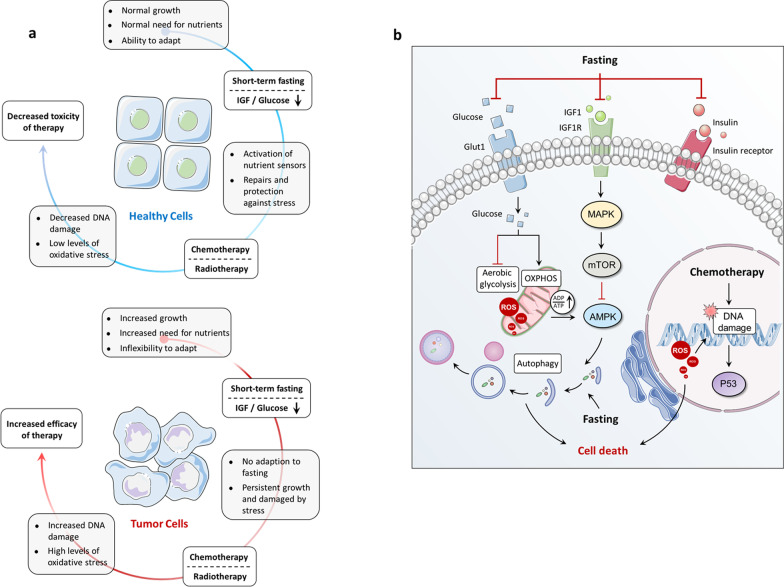Fig. 3.
The interplay between eating–fasting cycles and cancer. a eating–fasting cycles regulate differential stress resistance and sensitization of cancer cells. Fasting triggers metabolic reprogramming of adipose tissue and muscle, which on the one hand sensitizes cancer cells to chemotherapy and other cancer therapies while on the other protects healthy cells from side effects from tumor therapy. b fasting or FMDs is able to decrease the levels of growth-promoting nutrients and factors, including glucose, IGF1 and insulin. Decreased glucose levels coupled with reduced glucose uptake via inhibition of GLUTs result in downregulated aerobic glycolysis and increased OXPHOS. This metabolic switch increases the accumulation of cellular ROS levels in cancer cells in response to chemotherapy, resultantly causing oxidative DNA damage and cell death. In addition, fasting or FMDs can also regulate IGF1R-mTOR-AMPK signaling to activate anticancer immunity by inducing autophagy. FMD: fasting-mimicking diets; GLUT: glucose transporter; OXPHOS: oxidative phosphorylation; ROS: reactive oxygen species

